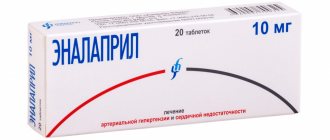Magnesium deficiency?
Magnesium is among the top most popular dietary supplements. There are at least three reasons for this.
- This metal really plays a very important role in the life of the body. It is needed by mitochondria to produce energy. Neurons - for transmitting electrical impulses. Cell ribosomes - for protein synthesis. With its help, damaged DNA molecules are restored, muscles contract and cholesterol is removed. Magnesium is involved in 500+ intracellular biochemical reactions and activates 300+ enzymes. And at the same time it is not produced inside the body. This means that we depend on its supply from the outside.
- According to frequently cited information, about 30% of Russians receive less than 70% of their daily dose of magnesium. But don't panic! We have found the original epidemiological study and hasten to reassure: it is not about all Russians, but only about 2,000 patients from several clinics.
- Anyone can suspect magnesium deficiency, even if a standard plasma or serum test shows that everything is normal. The catch is that 99% of magnesium is found inside cells (about 60% in bone tissue, the rest in muscles, brain, kidneys and liver), from where it is released into the blood when necessary to maintain optimal concentrations. So a normal level of magnesium in the blood does not exclude its deficiency at the cellular level. Therefore, popular health publications often advise focusing on external signs of deficiency. And there are so many of them (from apathy and high blood pressure to irritability and caries) that making a “diagnosis” is as easy as shelling pears.
The true diagnosis of magnesium deficiency is a battery of tests, including ECG, myography, bone density testing, saliva, urine, nails and hair analysis. Therefore, even if your legs often cramp, goosebumps appear, or your eyelid twitches (these are the most characteristic signs of magnesium deficiency), only a specialist can determine the real cause.
Why is it needed?
One of the main functions of magnesium is the creation of adenosite triphosphate, or ATP, a universal source of energy
for the entire body, the “energy station” of each cell.
In addition, it takes an active part in protein synthesis
and the absorption of certain nutrients.
For example, vitamin B6 (pyridoxine) can only be absorbed in the presence of magnesium. The second, no less important role of magnesium is the regulation of the balance of sodium and calcium
in cells.
This is especially important for the normal functioning of the nervous system and heart muscle. The correct balance of minerals prevents spasms from developing and allows the heart to pump blood without interruption. Thus, magnesium helps regulate heart rhythm and prevent the development of coronary heart disease and heart attacks. Magnesium plays an important role in normalizing blood pressure
.
Thus, a diet rich in fruits and vegetables containing a lot of magnesium significantly reduces the risk of developing hypertension. This mineral takes part in calcium metabolism in the body and helps in the restoration and growth of bone tissue. We can say that without the help of magnesium, the body cannot absorb calcium. Magnesium affects carbohydrate metabolism
by participating in the production of insulin, which controls blood glucose levels. In addition, it is involved in regulating blood clotting, protecting against the formation of blood clots.
Magnesium as a medicine
The logic of using magnesium in medicine is based on two principles.
- If you have a deficiency, it must be replenished to eliminate the risk of complications.
- Since magnesium is necessary to perform certain functions, it means that if they are impaired, it can be useful, even if there is no obvious or severe deficiency.
There are no questions about the first principle. A number of studies show that taking magnesium in case of deficiency actually reduces the risk of complications, such as heart attack - sometimes by more than a third (,). The second principle is more difficult.
If we assume that magnesium is involved in biochemical processes that affect dozens of vital functions, it can be prescribed for almost any disease - like vitamins. Therefore, magnesium supplements are often taken “just in case” for conditions as diverse as osteoporosis, chronic fatigue syndrome, and even mental disorders, including depression. But at the same time, patients, especially those suffering from serious diseases, are never treated with magnesium alone. This means that without a placebo-controlled study it is impossible to understand what exactly produced the therapeutic effect. And there are too few such studies to draw clear conclusions. In this situation, the most reliable criterion is the practical experience of medical specialists. To get first-hand information on the most proven uses of magnesium, we turned to several experts.
Cardiovascular diseases
As an electrolyte (conductor of electrical signals), magnesium plays an important role in the functioning of the cardiovascular system. For example, if there are fewer magnesium ions in the heart cells, the electrolyte balance is disrupted. This is often observed with arrhythmia and acute coronary insufficiency. Therefore, magnesium sulfate injections are actually used in intensive care when cardiac arrhythmias are life-threatening.
It is believed that magnesium generally has a beneficial effect on blood pressure. A meta-analysis of 11 placebo-controlled studies found that taking magnesium supplements did reduce blood pressure in people with chronic diseases, although only slightly: systolic by an average of 4 mm and distolic by 2 mm. Previously, magnesium injections were also given during hypertensive crises (a sharp increase in blood pressure), says cardiologist Anton Rodionov. But in fact, there is no point in using them for hypertension, because a “rebound” follows a decrease in pressure. Experiments on the use of magnesium injections in the treatment of acute heart attack also yielded conflicting results. One study found a 16% reduction in mortality. And the other two did not confirm this effect (,).
But with additives everything is more or less clear. “Dietary supplements with magnesium, in principle, cannot serve as medicines for cardiovascular pathologies,” says cardiologist and cardiovascular surgeon Alexey Utin. Anton Rodionov shares the same opinion: “Popular and widely sold drugs containing magnesium (panangin, asparkam) have neither an evidence base nor clinical meaning.”
Headache and migraine
One of the signs of magnesium deficiency is headaches and migraines. But does taking it help relieve headaches? “If everything were so simple, we would have defeated migraine a long time ago,” says Daria Korobkova, a neurologist at the University Headache Clinic. “Migraine is associated with the malfunction of pain neurons, its course depends on a colossal number of factors, and magnesium is only one brick in this multicomponent scheme.” There are several small placebo-controlled studies showing the effectiveness of magnesium in migraine prevention. Therefore, the American Migraine Foundation recommends taking 400–500 mg of magnesium oxide per day for this purpose. According to Daria Korobkova, she also often recommends magnesium preparations as an additional remedy to her patients suffering from episodic and menstrual migraines (it was precisely these subjects who participated in clinical studies of magnesium). In her experience, in such cases magnesium “works well,” but she cannot call its effectiveness high.
Diabetes
Not all people with type 2 diabetes suffer from magnesium deficiency, and magnesium deficiency does not always lead to diabetes. However, there is clearly a connection between these two conditions. Magnesium is involved in the processing of glucose, and its deficiency reduces the sensitivity of cellular receptors to insulin. Because of this, cells lose the ability to absorb sugar from the blood in the required volume. In addition, with type 2 diabetes, kidney function is often impaired, so too much magnesium is excreted from the body along with fluid. This is a theory. What about practice?
Attempts to use magnesium in the treatment of diabetes have yielded conflicting results, says endocrinologist Denis Lebedev. Although the subjects' blood sugar levels decreased after taking the drugs, a test for glycated hemoglobin (a key indicator for diabetes control) did not reveal statistically significant changes. The authors of the meta-analysis came to the same conclusion, summarizing all studies on this topic over the past six years, included in the largest scientific databases. Taking microelements and vitamins is justified in old age and with dietary restrictions, says Denis Lebedev. But not all diabetic patients need magnesium supplements. They are not prescribed on a regular basis.
Muscle spasms
Taking magnesium is the first thought that arises when your leg muscles cramp at night. And in cases where seizures are caused by excessive physical activity, and not by neurological diseases and age-related problems, this really has an effect - this is the conclusion made by the authors of the authoritative Cochrane review. Another thing is that, according to a special controlled study, this is more of a placebo effect. If you've ever suffered from calf muscle cramps and found relief from taking a magnesium supplement, you may find this hard to believe. But chiropractor and muscle pain expert Paul Ingram reminds us that we have no reason to expect that increasing blood magnesium levels will benefit muscles. Because we simply “don’t know how it works.”
Sleep disorders
Low magnesium levels are correlated with insomnia. This is the only concrete argument in favor of taking magnesium for sleep disorders. Because the biology of the interaction of magnesium with the sleep mechanism has been little studied. And studies of practical application give conflicting results. The authors of one major review even suggest that magnesium supplements are prescribed simply because they are much cheaper than sleeping pills. But there are exceptions. In one small placebo-controlled study, subjects' sleep quality improved by as much as 75 to 85% over 4 to 6 weeks. At least in their own opinion.
Alexey Moskalev, head of the laboratory of genetics of life expectancy and aging, also believes that magnesium in the form of citrate, malate or taurate has a calming effect before bedtime. Neuroscientist and science podcast author Andrew Huberman agrees. True, he himself prefers magnesium L-threonate, which more effectively overcomes the blood-brain barrier, that is, it more actively penetrates from blood plasma into brain tissue. “200–400 mg approximately 30 minutes before bedtime has a powerful hypnotic effect,” says the scientist. But at the same time he emphasizes that people with cardiovascular diseases should consult a doctor before such experiments.
Treatment of cardiac arrhythmias (HADs) is one of the most challenging tasks in cardiology. This is due to the wide variety of arrhythmias, imperfection of antiarrhythmic drugs and difficulties in choosing treatment tactics [1].
Cardiac arrhythmias develop when the functions of automaticity, excitability and conduction are impaired. As a result of changes in the functioning of potassium, calcium and sodium channels, the cell's action potential and the speed of impulse transmission change. Disruption of ion channels largely depends on the activity of the sympathetic division of the autonomic nervous system, concentrations of acetylcholine, ATP and the functioning of muscarinic-like M2 receptors [2].
The main reasons leading to LDCs:
• myocardial lesions of any etiology, including atherosclerosis of the coronary arteries, hypertrophic and dilated cardiomyopathies, heart defects, myocarditis, myocardial hypertrophy in arterial hypertension and chronic pulmonary heart disease;
• hormonal imbalance in diabetes mellitus, thyroid diseases, menopausal syndrome;
• intoxication with drugs, nicotine, alcohol, narcotic substances, industrial poisons (arsenic, cobalt, mercury, chlorine and organophosphorus compounds);
• disturbances in the metabolism of electrolytes of potassium, calcium, sodium, magnesium, acid-base status;
• neurovegetative imbalance, manifested by a predominance of activity of the sympathetic or parasympathetic part of the autonomic nervous system;
• lesions of the sinus node and cardiac conduction system of congenital or acquired origin;
• heart valve prolapse;
• mechanical irritations of the heart during cardiac surgery, catheterization and angiography [1, 3].
In clinical practice, a large number of drugs with different mechanisms of action are used to prevent and treat arrhythmias. Most antiarrhythmic drugs affect the shape of the action potential of cardiomyocytes, realizing their effects by influencing certain transmembrane ion currents [4].
Based on the effect of antiarrhythmic drugs on the shape of the action potential, they are divided into four classes. For the first time such a classification was proposed by E.M. Vaughan-Williams in 1971. Then, in 1979, it was modified by D. Harrison.
Representatives of class I antiarrhythmic drugs are sodium channel blockers and are divided into three subclasses. The IA subclass includes drugs that moderately slow down conduction and prolong the action potential - procainamide, quinidine, etc. IB subclass includes drugs that minimally slow down impulse conduction and slightly shorten the action potential - lidocaine, mexiletine, etc. Drugs of the IC subclass – propafenone, etacizine, flecainide, etc. – significantly slow down conduction and minimally prolong the action potential. Class II includes β-blockers - atenolol, propranolol, etc. A characteristic feature of class III drugs is the ability to lengthen the repolarization period. The most well-known drugs in this group are amiodarone, bretylium tosylate, and sotalol. The fourth class of antiarrhythmic drugs is represented by calcium channel blockers – verapamil, diltiazem, etc. [4].
However, this classification is not complete. Some drugs with antiarrhythmic activity do not fall within the four classes of antiarrhythmic drugs due to their mechanism of action. This group includes adenosine, cardiac glycosides, preparations of potassium and magnesium salts [4, 5]. Meanwhile, the role of these antiarrhythmic drugs in the treatment of NRS is very significant.
Currently, arrhythmias associated with electrolyte imbalance, in particular with impaired magnesium metabolism in the body, are especially relevant [6].
Magnesium deficiency is common in modern populations. The frequency of hypomagnesemia is quite high and, according to some authors, ranges from 10 to 34% [7]. In other studies, hypomagnesemia was detected among 42% of hospitalized patients [8]. However, even in the absence of hypomagnesemia, the body may experience a lack of magnesium. This phenomenon is explained by the fact that when there is a lack of this macroelement in the body tissues, magnesium can be released from the bones and its serum concentration turns out to be normal.
Therefore, in recent years the term “magnesium deficiency” has often been used. This term refers to a decrease in the total magnesium content in the body, while the concept of “hypomagnesemia” means a decrease in the concentration of magnesium in the serum below 0.8–.2 mmol/l [9].
There are primary and secondary magnesium deficiency. Primary magnesium deficiency is caused by disturbances in the genes responsible for transmembrane magnesium metabolism. More common is secondary magnesium deficiency, which can be caused by poor diet, poor social conditions, environmental conditions, stressful situations and various diseases.
The most common is nutritional magnesium deficiency. In modern refined products, fast food, vegetables and fruits grown using intensive technologies, the magnesium content is minimal. Magnesium deficiency is also aggravated by physical overexertion, stress, and alcohol abuse. Increased consumption of this macronutrient is observed during pregnancy and lactation [10].
Magnesium is one of the key elements of metabolic reactions for the formation, accumulation and utilization of energy; it is involved in the synthesis of proteins, including connective tissue collagen, and the exchange of nucleic acids and lipids. It plays an important role in regulating the state of the cell membrane and the processes of transmembrane transport of calcium and sodium ions. Therefore, magnesium primarily determines the normal functioning of nervous tissue, including the conduction system of the heart [6, 11, 12].
Clinical manifestations of magnesium deficiency are varied. There may be a decrease in mental and physical performance, increased anxiety, irritability, headaches, skeletal muscle cramps, spastic contractions of the intestines and other symptoms [9].
One of the characteristic manifestations of magnesium deficiency is LDCs. The effect of magnesium on heart rhythm is carried out through its effect on the transport of potassium, sodium and calcium ions, i.e., on the ions responsible for the formation of the action potential. When the content of magnesium ions in tissues is insufficient, transmembrane metabolism is disrupted and the electrical excitability of cardiomyocytes increases. This can lead to tachycardia and ectopic arrhythmias [13].
With long-term magnesium deficiency, other disorders in the cardiovascular system develop. In biological environments with a lack of magnesium, calcium salts accumulate over the years, and therefore the likelihood of calcification of atherosclerotic vascular plaques increases (potentiated by pyridoxine deficiency). The consequences of chronic magnesium deficiency include the development of arterial hypertension, endothelial dysfunction, accelerated progression of atherosclerosis, and increased risk of myocardial infarction and stroke [6, 9, 11, 13, 14].
The Framinghem Heart Study showed a correlation between long-term hypomagnesemia and a high incidence of ventricular extrasystoles, tachycardia, and ventricular fibrillation. The results of the PROMISE Study also indicate a higher frequency of ventricular extrasystoles and high mortality in the group of patients with hypomagnesemia [9].
The effectiveness of treating NRS with magnesium preparations has been proven in clinical studies. As an antiarrhythmic drug, magnesium salts are the drug of choice for congenital and acquired long QT syndrome and torsades de pointes. The effectiveness of magnesium preparations has also been shown for arrhythmias resulting from therapy with amiodarone and class I antiarrhythmic drugs. The effectiveness of magnesium preparations is associated with its ability to inhibit the development of trace depolarizations, shortening the duration of the QT interval [15, 16].
Magnesium preparations are also prescribed for the prevention and treatment of arrhythmias provoked by glycoside intoxication. Under the influence of magnesium ions, the function of the potassium-sodium pump of cardiomyocytes is restored [17].
In the treatment of NRS, both parenteral forms of magnesium salts and oral medications can be used, while for prevention it is most advisable to use dosage forms intended for oral administration. However, the possibilities of oral administration of inorganic magnesium salts are limited, since they cause diarrhea, and the percentage of magnesium absorption from them is about 5% [9].
In this regard, to correct magnesium deficiency, prevent and treat NRS, oral medications are currently mainly used, in which magnesium is usually combined with organic acids. Oral magnesium preparations are included in combination therapy regimens for many cardiovascular diseases. They are effective, well tolerated by patients and affordable.
One of the most successful organic compounds for use in clinical practice is magnesium orotate (OM) [18, 19]. Not only is it a source of magnesium, but it also has its own metabolic effects.
OM introduced from the outside accelerates biosynthetic processes, which at the level of the heart muscle is expressed in an increase in the synthesis of ATP and protein. It is OM that is optimal for fixing magnesium to ATP in the cell [19].
It has been established that OM has cardioprotective properties: it increases myocardial resistance to ischemia, accelerates its regeneration and increases survival during myocardial infarction. In addition, OM has a protective effect on the central nervous system during hypoxia, intoxication, injury, and helps reduce the level of total cholesterol, which in turn inhibits the development of atherosclerosis [18,19].
OM, due to the enhanced formation of pyrimidine nucleotides, stabilizes metabolic processes in damaged myocardial cells. Due to this, the loss of magnesium is reduced, which has a stabilizing effect on the myocardium and has significant clinical significance [13, 19, 20].
In Russia, the only drug containing OM today is Magnerot®. Our country has accumulated extensive experience in its use by cardiac patients. The main indication for the use of Magnerot® is Mg2+ ion deficiency and associated NRS. The ability of Magnerot® to prevent ventricular arrhythmias torsades de pointes in long QT syndrome, including in pregnant women and children, has been proven. Magnerot® is also effective for other types of ventricular and supraventricular extrasystole and can be used as a supportive agent after stopping an attack of atrial fibrillation. However, in case of severe cardiac arrhythmias, it is better to combine it with other antiarrhythmic drugs [21].
In recent years, a number of studies have been published on the positive effect of using magnesium preparations for cardiac rhythm and conduction disturbances in patients with congenital connective tissue dysplasia and mitral valve prolapse (MVP). According to epidemiological studies, in patients with MVP, magnesium deficiency is detected in almost 2/3 of cases. After treatment with magnesium drugs, patients with MVP experience a decrease in the number of ventricular extrasystoles, and therefore some authors consider this therapy to be etiopathogenetic [22].
The antiarrhythmic effects of magnesium orotate are widely used in pediatric practice. It was shown that in children with connective tissue dysplasia syndrome, Magnerot® therapy led to a decrease in echocardiographic signs of MVP and the frequency of detection of ventricular arrhythmias. In children, the level of intraerythrocyte magnesium increased, which was accompanied by a decrease in the severity of clinical manifestations of autonomic dysfunction. After 6 months from the start of using magnesium orotate, complaints decreased in more than half of the patients, and mitral regurgitation decreased in 33% of patients. An antiarrhythmic effect was also noted among the majority of patients [23].
The use of Magnerot® is also indicated for pregnant women. A relative deficiency of magnesium ions not only leads to an increased risk of developing tachyarrhythmias, but also increases the incidence of gestosis, fetoplacental insufficiency, miscarriage, and discoordinated labor. The use of OM increases the bioavailability of pure magnesium without exposing the mother and fetus to additional exposure to other substances. The inclusion of Magnerot® in complex therapy of pregnant women with MVP led to normalization of neuromuscular conduction and myocardial contractility, increased resistance to stress and improved uteroplacental blood flow [24].
One of the important indications for prescribing magnesium orotate is the correction of the proarrhythmogenic effects of class I and III antiarrhythmic drugs. Due to its ability to prevent excess calcium entry into cardiomyocytes, Magnerot® is also recommended for use to correct the toxic effects of cardiac glycosides. In patients receiving cardiac glycosides, serum magnesium levels should be monitored and, as necessary, magnesium orotate should be prescribed to such patients for prophylactic purposes [21].
When analyzing Holter ECG monitoring parameters during Magnerot® therapy, a decrease in the maximum heart rate, a decrease in episodes of supraventricular and especially ventricular extrasystole, tachy- and bradycardia were revealed. Treatment with Magnerot® also showed a decrease in the number of patients with late ventricular potentials, which are a marker of an increased risk of developing ventricular extrasystole and tachycardia, and a decrease in endothelial dysfunction [13, 20, 21, 25].
The prescription of Magnerot® is also justified in the following clinical situations (as a component of combination therapy):
• combination of arterial hypertension with hyperlipidemia and manifestations of myocardial ischemia, including in patients with diabetes mellitus;
• heart rhythm disturbances due to chronic alcohol intoxication and chronic stress [20];
• chronic heart failure.
Currently, there is no solid evidence of the positive effect of Magnerot® on echocardiographic parameters of patients with chronic heart failure, but there is no negative effect on indicators of central hemodynamics, contractility, remodeling and left ventricular myocardial mass.
At the same time, in patients who did not receive Magnerot®, there was a significant deterioration in many echocardiogram parameters: a decrease in ejection fraction, an increase in the end-diastolic and end-systolic dimensions of the left ventricle. There was also a decrease in such indicators of central hemodynamics as stroke volume, stroke and systolic indices. It has been established that with the use of Magnerot® there is an improvement in the quality of life of patients with chronic heart failure, and the relative risk of death is significantly reduced [13].
Almost all researchers note the good tolerability of Magnerot® and the extremely rare occurrence of any unwanted side effects when using it [9, 20].
Thus, magnesium deficiency is a pressing problem today and can lead to both NRS and many other pathological conditions. To correct it, it is necessary to use drugs that have proven their high clinical effectiveness and good tolerability.
Such a drug is Magnerot®, which has cardioprotective properties. Magnerot® is one of the main means of treatment and prevention of cardiac arrhythmias and a good addition to complex pharmacotherapy of other cardiovascular pathologies.
Nutritional supplements
Magnesium supplements come in the form of tablets, powder, solutions, capsules, and even chewing gum. But in this case, it is not the form that is important, but the content.
Dosage.
The recommended daily dose of magnesium is 300 mg for women and 400 mg for men. But there is an important nuance: the more magnesium enters the body at a time, the worse it is absorbed in the intestines. Therefore, it is better to take it several times a day in small portions.
Compound.
Which supplement to choose is also not just a matter of convenience. Due to the high chemical activity of magnesium, there is no point in taking it in its pure form. (Except for the laxative effect: it absorbs water, diluting the contents of the intestines.) Therefore, it is commercially available in the form of compounds with other substances, mainly organic acids. According to the principle of action, these compounds do not differ from each other. The active ingredient in them is the same. Their job is simply to deliver magnesium to the small intestine, where it is absorbed into the blood. And everyone copes with this task. But how much magnesium gets from the intestines into the blood depends on the size and chemical properties of the molecules with which it is combined. And the additives differ in this parameter. Here is a rating of dietary supplements based on the degree of magnesium absorption.
Magnesium gluconate ⭐️⭐️⭐️
Used in medicine for magnesium deficiency. In online stores it is sold under the names Mag-G, Magonate, Magonate Natal, Magtrate. May cause nausea and diarrhea.
Magnesium Orotate ⭐️⭐️⭐️
Magnesium salt of orotic acid. Magnesium content is just over 3%.
Magnesium malate ⭐️⭐️
Magnesium salt of malic acid. Magnesium content is about 7%.
Magnesium Citrate ⭐️⭐️
The most popular form is magnesium with citric acid. Magnesium content - 5%.
Magnesium L-threonate ⭐️⭐️
Magnesium salt of threonic acid. The patented formula is Magtein, specially designed to facilitate the penetration of magnesium from the blood into the brain tissue. Magnesium content is about 3%.
Magnesium Taurat ⭐️⭐️
Compound with taurine molecule. Magnesium content is less than 4%.
Magnesium oxide ⭐️
Binding of magnesium and oxygen. The low level of bioavailability is compensated by the highest concentration of magnesium among dietary supplements - 50%. More often than other supplements, it causes side effects - nausea, stomach cramps and diarrhea.
The absorption of magnesium into the blood from the small intestine can be interfered with by iron, zinc and phosphorus, as well as oxalic acid, which is abundant in spinach and cabbage. Magnesium also has a difficult relationship with calcium, which is also absorbed in the small intestine and there competes with it for its place in the sun. But vitamin D, on the contrary, is friendly with magnesium and enhances its absorption.
Top 5 Foods Rich in Magnesium
The body's daily need for magnesium is about 400 mg for men and 300 for women. The indicator may fluctuate depending on age, physical condition and during pregnancy. This mineral is not produced in the body, so we can only get it with food or in the form of a supplement. The dosage and schedule for taking microelements should be prescribed by a doctor, but you can adjust the diet yourself.
Sunflower seeds and seeds.
100 g of raw pumpkin seeds contain more than 500 mg of magnesium, sesame seeds - more than 350 mg, sunflower seeds - 125 mg. But this does not mean that you need to consume them in such quantities every day! The seeds and seeds are high in calories and in large quantities can cause stomach upset. But you can add a teaspoon of seeds to your diet to compensate for magnesium deficiency.
Nuts.
Another satisfying and nutrient-rich product. Almost all varieties contain magnesium, but the leaders in its amount are cashews, almonds and pine nuts (from 250 to 290 mg of magnesium per 100 g of raw product). You should also not overuse nuts; on average, it is recommended to eat no more than 30–60 grams per day.
Dark chocolate.
Choose one that contains 70% cocoa or more. It is this chocolate that will benefit the body: not only magnesium (from 152 mg in one bar), but also iron, manganese, copper and other valuable substances.
Leafy greens.
Greens from the garden contain magnesium, as well as iron, manganese, vitamins C, A, K and other useful substances. The most magnesium is found in sorrel (100 mg) and spinach (87 mg).
Fish.
An impressive list of useful substances in fish: vitamin B, omega, potassium, selenium and, of course, magnesium. Of the most popular varieties, it is worth paying attention to mackerel and pollock: 100 g of boiled product contains approximately 50 mg of magnesium.
Transdermal magnesium
Despite all the efforts of manufacturers, the bioavailability of magnesium from dietary supplements remains quite low. Hence the idea of delivering it to the body in other ways. For example, through the skin.
Creams and sprays
And also gels, soaps, oils and lotions, mainly with magnesium chloride (it has the second highest concentration of magnesium after oxide - 30%). American naturopath Norman Shealy was the first to speak about their effectiveness. In 2005, he published a comparison table that showed that by rubbing magnesium cream into the skin, you can correct the deficiency much faster than using nutritional supplements (in a month and a half, rather than in six months). It is this research that is usually meant when it is repeated like a mantra that magnesium is absorbed better through the skin. The problem is that there is no study - only a short abstract with conclusions is available. But several screening tests with animals and people did not confirm them. Apparently, the author rubbed in not only magnesium. So a large review of current research on this topic does not recommend transdermal use.
Magnesium baths
This practice dates back to the 18th century, when a resort with unusual mineral water opened in the English town of Epsom - a natural solution of Epsom salts (magnesium sulfate). Now this mixture is credited with various healing properties: it helps to relax and lose weight, relieves pain, and among the most toxic, it “removes toxins.” But initially it was believed that it simply had a laxative effect, which is closer to the truth: taking capsules or tablets with magnesium sulfate sometimes causes diarrhea.
The only study on the effects of magnesium baths was conducted in England, involving 19 students at the University of Birmingham. They lay in a solution of magnesium sulfate (1 g/100 ml) for 12 minutes a day at temperatures up to 55 degrees. At the end of the study, the majority of subjects had increased magnesium concentrations in their blood, although only slightly. This did not affect their health in any way. But questions remain.
Magnesium molecules are small enough to penetrate the skin barrier. Magnesium ions labeled with fluorescent markers actually penetrate into the top layer of the skin, using the openings of the hair follicles as a loophole. But for the cellular absorption of magnesium, special transport channels are needed, and they are not present in the skin. How could magnesium get into the blood of students? There are several assumptions. The first is boring, but the most plausible: through the lungs with steam. The second is much more fun: thanks to the absorption of magnesium ions by the mucous membrane of the anus. In the same way, the body could absorb alcohol from a hot bath. But, as Paul Ingram rightly notes, if you really want to take magnesium (or alcohol), then it’s more pleasant and easier to do it by mouth.
Materials and methods
The meta-analysis included all published and ongoing randomized clinical trials of the effectiveness and safety of magnesium orotate (Magnerot, 700–3000 mg/day as magnesium orotate) in 1190 patients (527 women, 663 men) 18−65 years (mean age 36 ±19 years) with cardiovascular pathology, found in the Medline, Embase, ELibrary and Russian State Library databases.
In assessing the effectiveness of therapy, the following criteria were used: the presence in patients of conditions such as severe hypomagnesemia (Mg level in blood plasma and erythrocytes less than 0.75 and 1.65 mmol/l, respectively), exercise intolerance (6-minute walk test, etc.) .), vegetative-vascular dystonia (SVD) and Raynaud's syndromes, vascular symptoms (discoloration of the hands (feet), swelling, migraine, headache, lipothymia, syncope, dizziness) and hemorrhagic disorders (nosebleeds, tendency to bruise, bleeding gums , long (heavy) menstruation), mitral valve prolapse (MVP), depth of MV prolapse (in mm), myxomatous degeneration of MV leaflets, regurgitation, size of the left atrium (in cm), morphological changes in the skin (dystrophy of the epidermis, thinning and smoothness of the papillary layer , disorganization of collagen fibers, destruction and disorganization of elastic fibers, changes in acid glycosaminoglycans and ribonucleic acid of fibroblasts), perivascular lymphohistiocytic infiltration, vasculitis, impaired vascular permeability, mast cell reaction. In addition, quality of life (VAS scale), electrocardiogram (ECG) data, including heart rate (HR), occurrence of tachycardia episodes, ventricular and supraventricular extrasystoles, paroxysmal supraventricular tachycardia, and blood pressure (BP) indicators were assessed. Across all studies included in the meta-analysis, 57 parameters were collected for each patient group.
During the collection and systematization of data from the analyzed studies, information was extracted on the number, age, gender, diagnoses of patients in the relevant groups, the mode of taking the drug Magnerot and the above criteria for assessing the effectiveness of therapy. Preprocessing of the collected data was carried out in accordance with the guidelines for evidence-based medicine [28]. The criteria for assessing the quality of biomedical research described in the monograph in 2007 by I.Yu were used. Torshin [29]. Each study was assessed by two experts, with discrepancies resolved through discussion. Whenever possible, the original data tables used to prepare the original publications included in the meta-analysis were requested. All trials meeting the inclusion criteria were included in the initial analysis.
Table 1. Studies of the effects of Magnerot therapy in various areas of clinical medicine Note. * — therapy of atopic dermatitis [30] and open-angle glaucoma [31].
Inclusion criteria for the studies were: 1) use of magnesium orotate; 2) the cardiac profile of the patients (therefore, studies such as [30, 31] were excluded); 3) randomized design; 4) dosage of magnesium orotate - at least 500 mg/day, course - at least 1 month; 5) differences between the “case” and “control” groups only in the use (non-use) of magnesium preparations, and not any other vitamin-mineral complexes, types of therapy, etc. (except for cases when the introduced effect relates specifically to taking magnesium orotate, for example, increasing Mg levels in blood plasma and red blood cells, etc.); 6) assessment of the complex clinical dynamics of the patients’ condition (and not just individual biochemical parameters).
Meta-analysis was conducted using a fixed effects model. Summary statistics for dichotomous variables are presented as relative risks (RRs) with 95% confidence intervals (CIs), statistics for continuous variables are presented as weighted mean differences with 95% CIs. Calculations were carried out using the author's MedStudy software package for mining biomedical data [1, 32]. Visualization of the meta-analysis results was carried out using a special applet for MS Excel spreadsheets.
Supplements or food?
All the experts we interviewed were unanimous on this issue. Why take magnesium supplements at all if you are not deficient when there are so many delicious foods around that are rich in this micronutrient? Here are some examples.
- Dark Chocolate: Approximately 64 mg of magnesium per slice (16% DV).
- Avocado: One medium-sized fruit contains 58 mg of magnesium (15% of the daily requirement).
- Cashews: A 28g handful of cashews provides 82mg of magnesium (20% of the daily requirement).
- Brazil nuts: 100 g (approximately 12-15 pieces) cover the daily requirement for magnesium by 100%.
- Beans: A cup of cooked black beans provides 120 mg of magnesium (30% of the daily requirement).
- Banana: one piece contains 37 mg of magnesium (9% of the daily requirement).
- Salmon: Half fillet weighing 178 g contains 53 mg of magnesium (13% daily requirement).
The benefits of normal food do not end with the fact that it is tastier and more nutritious. There are two more important points.
Compatibility.
Dietary supplements with magnesium cannot be taken together with antibiotics (tetracyclines and quinolones), because magnesium forms poorly soluble compounds with them. Real food has no such restrictions.
Side effects.
When taking supplements, an overdose is possible, which is accompanied by unpleasant symptoms such as nausea, abdominal cramps and diarrhea. And this, in turn, can cause dehydration and loss of magnesium. There is no risk of overdosing on nuts, pumpkin seeds and salmon. Also because in this case a “smart” algorithm works. The body itself regulates the level of absorption: it increases from an average 30-40% to a maximum of 80% if there is little magnesium in foods, and reduces to 25% if there is too much.









